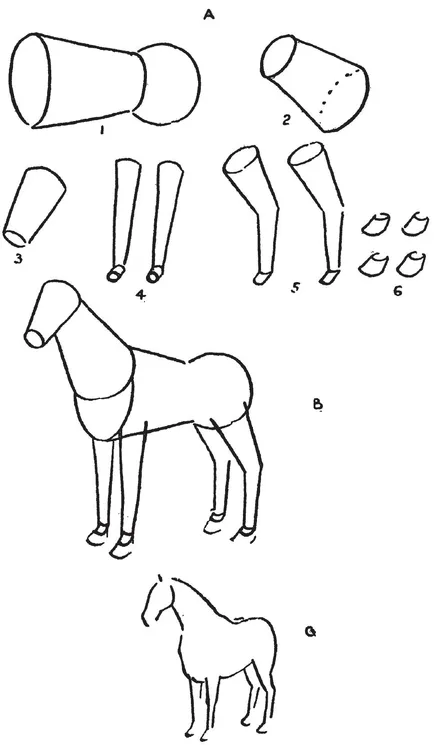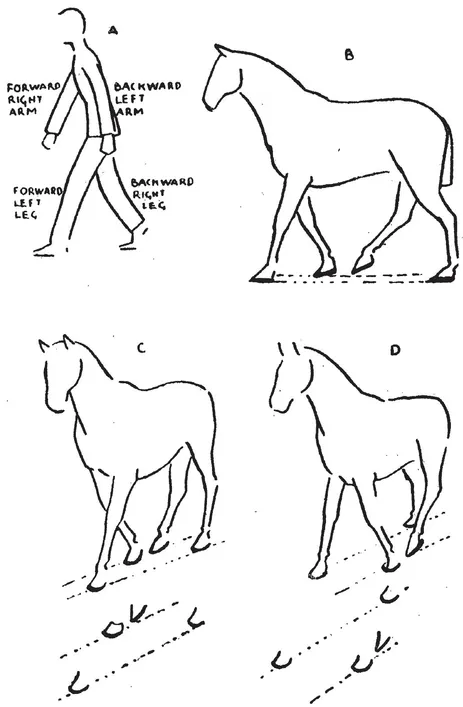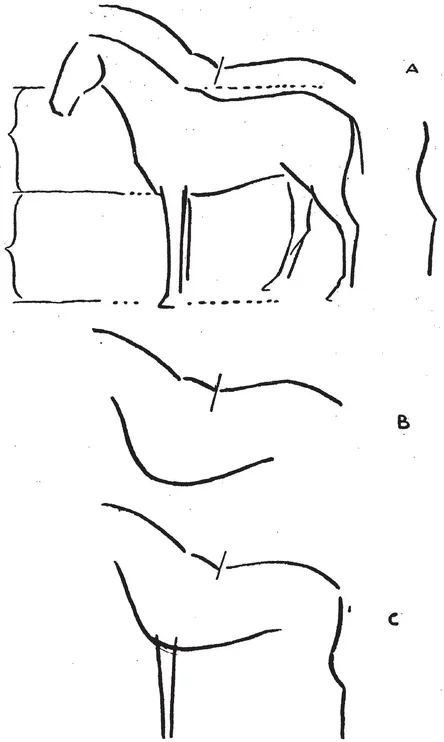
eBook - ePub
Animal Sketching for Beginners
Len A. Doust
This is a test
Buch teilen
- 64 Seiten
- English
- ePUB (handyfreundlich)
- Über iOS und Android verfügbar
eBook - ePub
Animal Sketching for Beginners
Len A. Doust
Angaben zum Buch
Buchvorschau
Inhaltsverzeichnis
Quellenangaben
Über dieses Buch
This handy manual provides the confidence, insight, and guidance to help any sketcher create realistic animal drawings. With the help of the author's thirty-one clearly detailed drawings, this basic how-to-guide:
• illustrates major attributes shared by many animals
• shows how simple shapes can create complex drawings
• functions as a valuable anatomy reference
A source of inspiration for artists at all levels, this book will be especially helpful to beginning art students.
• illustrates major attributes shared by many animals
• shows how simple shapes can create complex drawings
• functions as a valuable anatomy reference
A source of inspiration for artists at all levels, this book will be especially helpful to beginning art students.
Häufig gestellte Fragen
Wie kann ich mein Abo kündigen?
Gehe einfach zum Kontobereich in den Einstellungen und klicke auf „Abo kündigen“ – ganz einfach. Nachdem du gekündigt hast, bleibt deine Mitgliedschaft für den verbleibenden Abozeitraum, den du bereits bezahlt hast, aktiv. Mehr Informationen hier.
(Wie) Kann ich Bücher herunterladen?
Derzeit stehen all unsere auf Mobilgeräte reagierenden ePub-Bücher zum Download über die App zur Verfügung. Die meisten unserer PDFs stehen ebenfalls zum Download bereit; wir arbeiten daran, auch die übrigen PDFs zum Download anzubieten, bei denen dies aktuell noch nicht möglich ist. Weitere Informationen hier.
Welcher Unterschied besteht bei den Preisen zwischen den Aboplänen?
Mit beiden Aboplänen erhältst du vollen Zugang zur Bibliothek und allen Funktionen von Perlego. Die einzigen Unterschiede bestehen im Preis und dem Abozeitraum: Mit dem Jahresabo sparst du auf 12 Monate gerechnet im Vergleich zum Monatsabo rund 30 %.
Was ist Perlego?
Wir sind ein Online-Abodienst für Lehrbücher, bei dem du für weniger als den Preis eines einzelnen Buches pro Monat Zugang zu einer ganzen Online-Bibliothek erhältst. Mit über 1 Million Büchern zu über 1.000 verschiedenen Themen haben wir bestimmt alles, was du brauchst! Weitere Informationen hier.
Unterstützt Perlego Text-zu-Sprache?
Achte auf das Symbol zum Vorlesen in deinem nächsten Buch, um zu sehen, ob du es dir auch anhören kannst. Bei diesem Tool wird dir Text laut vorgelesen, wobei der Text beim Vorlesen auch grafisch hervorgehoben wird. Du kannst das Vorlesen jederzeit anhalten, beschleunigen und verlangsamen. Weitere Informationen hier.
Ist Animal Sketching for Beginners als Online-PDF/ePub verfügbar?
Ja, du hast Zugang zu Animal Sketching for Beginners von Len A. Doust im PDF- und/oder ePub-Format sowie zu anderen beliebten Büchern aus Arte & Técnicas artísticas. Aus unserem Katalog stehen dir über 1 Million Bücher zur Verfügung.
Information
Thema
ArteThema
Técnicas artísticasTHE PLATES
PLATE 1.—At Fig. A, I have drawn in their simplest form these shapes. At A,1 you see the body with its two sections, at A,2 the neck, at A,3 the head, at A,4 the fore legs, at A,5 the hind legs, and at A,6 I have added hoofs.
These basic animal shapes are based on the horse in their proportions, one to another. Many people may make a passable drawing of a furry cat or dog where the actual form is hidden and the suggestion of fur needs no great accuracy, but when drawing a horse or any such smooth-coated animal one must have accurate knowledge of its form, or the result is disaster.
Now let us assemble the shapes of Fig. A. The result, as shown at Fig. B, has a close resemblance to the toy horse of the nursery, and you may think the lesson is as childish as the result. I cannot insist, but do implore you to go no farther into this book until you can draw Figs. A and B without reference to this plate. Remember that these toy shapes are not here to teach the drawing of the horse only, but of every four-footed beast. As a slight proof of their utility, I add at Fig. C a very rapid sketch of a horse based on Fig. B.
PLATE 2.—My next plate teaches another primary lesson. You will notice the sketch of a man walking at Fig. A and the writing attached. Check these words with the three sketches of a horse, and you will discover that they agree. Associated with this movement of the legs is the important fact of the leg position. Always remember that the four legs are not all behind one another. This is ably demonstrated by the lines drawn under each horse. Although the simple demonstration of the leg movements of a horse when walking is that of these sketches and the words around the man figure, yet a more careful observation proves that the times of the actual placing of the feet to the ground are not in pairs, but individually and one after the other ; in other words, the order of the taps of a horse’s hoofs are as follows : front right, back left, front left, back right. Bearing this in mind and remembering that each foot is lifted quite considerably between each step, you may easily obtain the approximate relative positions.

PLATE 1

PLATE 2
One other observation may be made from this plate : the simple one that a horse’s feet move along two lines as shown dotted. When we come to a half or full front view of a standing horse, this fact becomes obvious even as it is in Plate 1, Figs. B and C. Never forget the three dimensional outlook, that is to say, never neglect the fact of thickness as well as length and height.
PLATE 3.—We will leave the subject of motion for the time being and return to that of form. Fig. A shows the simplified outline of a horse. The shape appears most complicated even in this simple style. I have no need to remind you, so soon, of Plate 1 ; but I suggest that you lightly divide this Fig. A into the sections of Plate I, Fig. A. Heed the curved lines above the back and beside the hind quarters. Practise these shapes in various sizes up to ten inches. Note the short cross line which cuts the back line in the centre. Fig. B shows the back line and the chest and stomach line. To these are added, in Fig. C, the line of the hind quarters and the fore leg. You observe the faint resemblance to an animal. The head shape and inside of hind leg are easily added.
You will gain, not only a knowledge of proportion, but also an adroit use of your pencil, if you practise this page thoroughly. You may not at this early stage understand what each line represents in actual life, but with these lines firmly fixed in your mind you would, I am sure, make a study of a horse very much more easily and accurately than you would have done just the few minutes before, when you had not studied this apparently unimportant plate. These early plates of simple construction are the vital ones. Copy them, memorise them, draw them reversed, even trace them if you wish. I care not what you do with them so long as they are fixed in your mind. Do not imagine that every line is accurate. I draw these without careful preparation. No matter if the shape is not the shape of a horse, the important thing is the type of lines used and their approximate relations to one another.

PLATE 3
One other point to heed on Plate 3—the proportion lines to the left of Fig. A. As a rule, you may estimate that, in a horse, the depth from withers to base of chest is equal to the length of fore ...